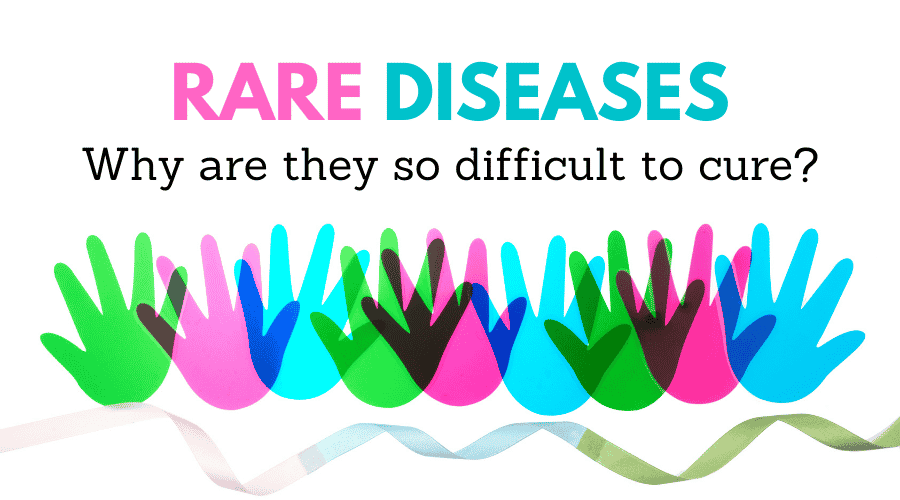What’s in Today’s Article?
- Why in the News?
- About Rare Diseases
- Challenges Associated with Rare Diseases
- National Policy for Rare Diseases, 2021
- News Summary
Why in the News?
- Indian drug companies have started manufacturing medicines for at least four conditions, bringing down the cost by up to 100-fold.
About Rare Diseases
- A rare disease is a health condition of low prevalence that affects a small number of people compared with other prevalent diseases in the general population.
- There are 7,000-8,000 classified rare diseases, but less than 5% have therapies available to treat them.
- A condition is considered to be a rare disease if its prevalence is less than one case per 1,000 population.
- Around 6% to 8% of the population is estimated to have a rare disease, meaning 8.4 crore to 10 crore Indians are living with these conditions for which treatments either do not exist or therapies are extremely expensive.
- While a majority of rare diseases are believed to be genetic, many — such as some rare cancers and some autoimmune diseases — are not inherited.
Challenges Associated with Rare Diseases
- The field of rare diseases is complex and heterogeneous as prevention, treatment and management of these diseases has multiple challenges.
- Early diagnosis is a major challenge owing to a variety of factors that include lack of awareness among primary care physicians, lack of adequate screening and diagnostic facilities etc.
- Relatively little is known about the pathophysiology or the natural history of majority of rare diseases, particularly in the Indian context.
- Rare diseases are also difficult to research upon as the patients pool is very small and it often results in inadequate clinical experience.
- Despite progress in recent years, there is a need to augment effective and safe treatment for rare diseases.
- The cost of treatment of rare diseases is prohibitively expensive. For example, treatment for Spinal Muscular Atrophy (SMA) costs approximately Rs. 16 crore.
- Various High Courts and the Supreme Court have also expressed concern about lack of a national policy for rare diseases.
National Policy for Rare Diseases, 2021
- In 2021, the Union Ministry of Health and Family Welfare had approved the National Policy for Rare Diseases.
- Key Features of the Policy:
- A provision for financial support up to Rs. 20 lakhs under the umbrella scheme of Rastriya Arogya Nidhi is provided for treatment, of those rare diseases that require a one-time treatment.
- Objective: To lower the high cost of treatment for rare diseases with increased focus on indigenous research.
- Eligibility: Beneficiaries for financial assistance are not be limited to below poverty line (BPL) families, but extended to about 40% of the population, who are eligible under Ayushman Bharat – Pradhan Mantri Jan Arogya Yojana (AB-PMJAY).
- The policy has categorised rare diseases into three groups:
- Diseases amenable to one-time curative treatment;
- Diseases requiring long term or lifelong treatment;
- Diseases for which definitive treatment is available but challenges are to make optimal patient selection for benefit.
- The policy envisages creation of a national hospital based registry of rare diseases.
- The policy focuses on early screening and prevention through primary and secondary health care infrastructure.
- Screening is supported by Nidan Kendras set up by Department of Biotechnology.
- Policy also aims to strengthen tertiary health care facilities for prevention and treatment of rare diseases.
- This is ensured by designating eight health facilities as Centre of Excellence (CoE).
- These CoEs are provided with one-time financial support of up to Rs. 5 crores for upgradation of diagnostics facilities.
News Summary
- The Union government has announced a special initiative for manufacturing four types of homegrown ‘Made in India’ drugs for rare diseases for the first time.
- The government has prioritised 13 rare diseases and sickle cell disease.
- Currently, there are eight types of generic drugs and among them, four types of drugs are available in India and another four types of drugs will be available next year.
- The available generic drugs are for Tyrosinemia Type, Gaucher’s Disease, Wilson’s Disease and Dravet or Lennox Gastaut Syndrome- seizures.
- Tyrosinemia Type:
- Tyrosinemia type I is a rare autosomal recessive genetic metabolic disorder characterized by lack of the enzyme fumaryl acetoacetate hydrolase (FAH), which is needed for the final break down of the amino acid tyrosine.
- The available priority drugs like Nitisinone (capsules) are used for the treatment of Tyrosinemia Type 1 and the cost difference of this drug is Rs. 2 crore per annum if purchased from other countries but an Indian company is manufacturing this in Rs. 2.5 lakh per annum.
- Gaucher’s Disease:
- Gaucher (go-SHAY) disease is the result of a buildup of certain fatty substances in certain organs, particularly your spleen and liver.
- The drug Eliglustat recommended for the treatment of Gaucher’s Disease will cost India Rs. 3-6 lakhs per annum.
- Wilson’s Disease:
- Wilson disease (hepatolenticular degeneration) is a rare, autosomal recessive disorder caused by abnormal copper accumulation in the body particularly involving the brain, liver, and cornea.
- Lennox Gastaut Syndrome:
- Lennox-Gastaut syndrome (LGS) is a rare but severe form of childhood epilepsy characterized by a triad of multiple seizure types, characteristic EEG findings, and intellectual impairment.
- Tyrosinemia Type:
- The government is working on a production-linked incentive scheme for these medicines.
- The medicines, at present, are available at the centres of excellence for rare diseases.
- In addition, the government is looking at whether making it available at Jan Aushadhi stores will be feasible.
Q1) What are Genetic Disorders?
Genetic disorders occur when a mutation affects your genes. Carrying the mutation doesn’t always mean you’ll end up with a disease.
Q2) What are Non Communicable Diseases?
The term NCDs refers to a group of conditions that are not mainly caused by an acute infection, result in long-term health consequences and often create a need for long-term treatment and care. These conditions include cancers, cardiovascular disease, diabetes and chronic lung illnesses.
Source: Major drop in cost of drugs for 4 rare diseases after Indian companies begin production | HT
Last updated on December, 2025
→ Check out the latest UPSC Syllabus 2026 here.
→ Join Vajiram & Ravi’s Interview Guidance Programme for expert help to crack your final UPSC stage.
→ UPSC Mains Result 2025 is now out.
→ UPSC Notification 2026 is scheduled to be released on January 14, 2026.
→ UPSC Calendar 2026 is released on 15th May, 2025.
→ The UPSC Vacancy 2025 were released 1129, out of which 979 were for UPSC CSE and remaining 150 are for UPSC IFoS.
→ UPSC Prelims 2026 will be conducted on 24th May, 2026 & UPSC Mains 2026 will be conducted on 21st August 2026.
→ The UPSC Selection Process is of 3 stages-Prelims, Mains and Interview.
→ UPSC Result 2024 is released with latest UPSC Marksheet 2024. Check Now!
→ UPSC Prelims Result 2025 is out now for the CSE held on 25 May 2025.
→ UPSC Toppers List 2024 is released now. Shakti Dubey is UPSC AIR 1 2024 Topper.
→ UPSC Prelims Question Paper 2025 and Unofficial Prelims Answer Key 2025 are available now.
→ UPSC Mains Question Paper 2025 is out for Essay, GS 1, 2, 3 & GS 4.
→ UPSC Mains Indian Language Question Paper 2025 is now out.
→ UPSC Mains Optional Question Paper 2025 is now out.
→ Also check Best IAS Coaching in Delhi

















